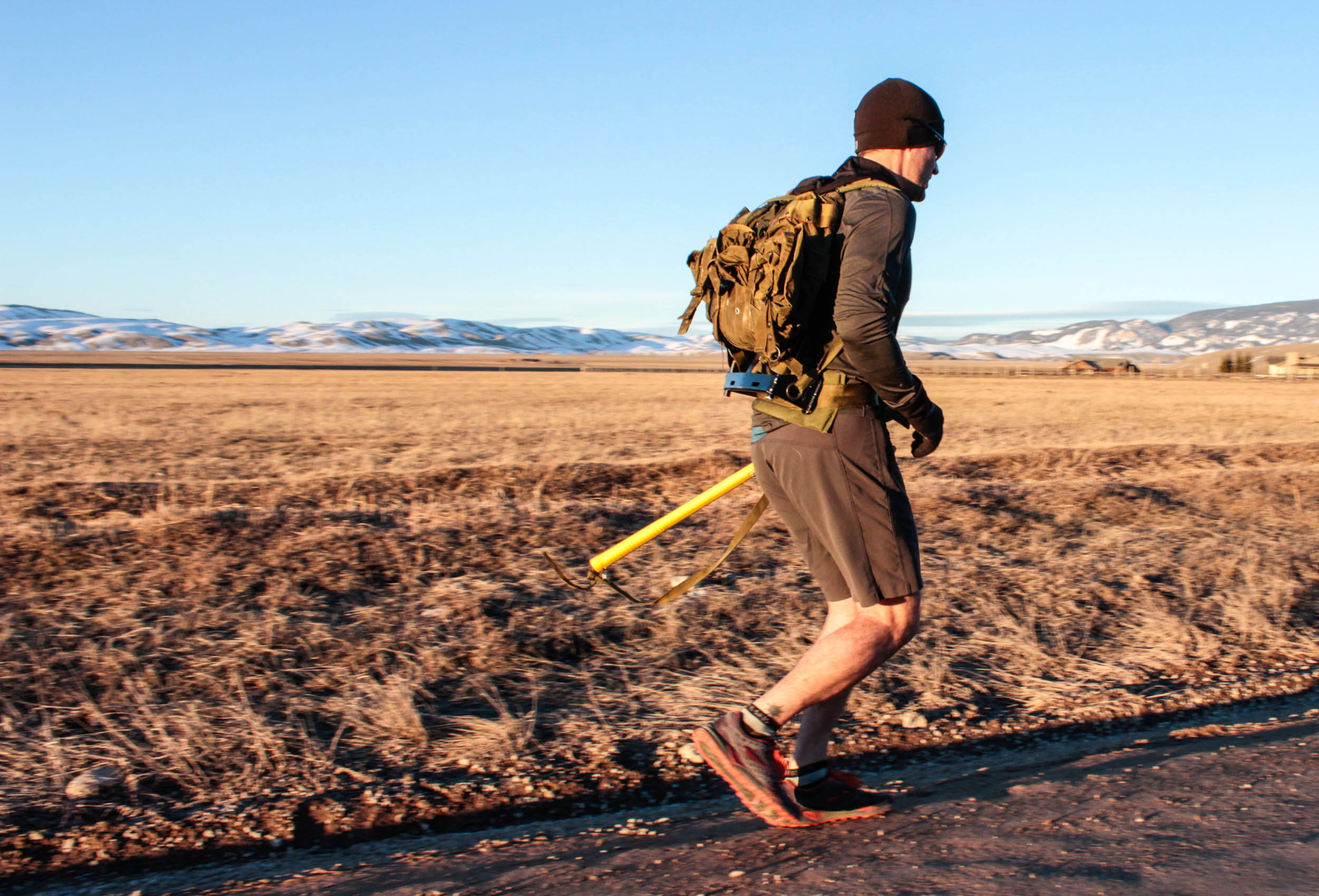Rob,
I want to say thank you and that I really enjoy your programming. I got the shipboard training for my deployment this summer and I really enjoyed it, as I do with your other plans.
I just wanted to say thank you for putting these together.
QUESTION
My issue is I’m recovering from a chronic lower back injury that’s kept me from training for about two years. I’m finally able to start back up but can’t decide/find a program that is keeping me motivated. Right now I’m starting back up with one of your basic body weight programs which have always been just a grind through not thoroughly enjoyable style of training for me but it is what it is.
I was a rescue swimmer in the navy for 6 years, competed regionally in CrossFit, ran a couple of marathons and training was major part of my life just in general.
I’d like to get back into one of your programs that have weight lifting and Olympic lifting but i don’t think I’ll ever be doing a heavy squat, or any Full Olympic lift again (stick to power lifts, no squat involved).
I play hockey and hunt in the summers, a lot of which is mountain hunting- so I’d like to train for that but also get back to the training i enjoy in general. So my question is – what programs do have that would best suit my situation and what order would you recommend them in? Thank you again for reaching out and thank you for what you do. Happy Veterans Day.
ANSWER
Several have used our
Low Back Fitness Training Plan to build back up both low back physical fitness, but mental confidence in their low back. It includes lifting.
I’m not sure from your note if you’re confident enough yet for lifting.
If not – look at
SF45 Delta – one of our plans for 45-55-year-olds, this plan is actually no joke, and deploys 3 types of bodywieght training with aerobic endurance. It may give you the variety you miss from the gym stuff while your back builds back up.
Respectfully,
– Rob
QUESTION
Prior to my September 2017 elk hunt, I completed the Back Country Big Game Packet. Great training that definitely had me prepared for my hunt and stronger than I thought I could be at 51 years old. BTW, Humility is appropriately named and had me routinely thinking about the puke bucket on the burpee/quadzilla/scotty bob days.
A few weeks ago I purchased the SF45 packet and my plan for the upcoming year is to go through the 7 months of SF45 and then complete the Back Country Big Game plan 8 weeks prior to my 2018 hunt. In your experience, will this plan work? Any advice for combining SF45 and BCBG plan? As always, thank you for your advice.
ANSWER
The SF45 plans are no joke.
– Rob
QUESTION
Is there a way for me to print out any individual plan that I buy? Also, I want to start getting ready for my first GoRuck event but I’m not in the best of shape. I was thinking about starting with the bodyweight foundation, then moving onto humility to get used to rucking, and then finally to one of the specific GoRuck plans. Is this a good route to take, or should I simplify by going straight into Humility? Thank you for your time!
ANSWER
Printing? Yes – you can print out plans.
Respectfully,
– Rob
QUESTION
I recently found your gym and programs and am really interested in purchasing a workout routine but am struggling to find the right fit. I live in Crested Butte, Colorado and train regularly but am not always satisfied with my results. I also have years of back, shoulder, and knee injuries and am looking for a way to protect my body.
I do both resort and backcountry skiing at a high level. I also climb and don’t want to lose my upper body fitness.
What would you recommend for a full body routine to help me build muscle and stamina and keep me fit for the season.
Any help would be massively appreciated.
ANSWER
Even our pro freeskiers and Olympic skiers prepare sport-specifically for the ski season. Even though the season is close, I’d recommend part of your current programming the next 2-4 weeks be focused on skiing – specifically the
30-Minutes Per Day Dryland Ski Training Plan.
Don’t be fooled by “30-minute) – this plan is no joke, and includes focussed eccentric leg strength, leg lactate strength, a little upper body and midsection training. Supplement this plan with some running – 3-4 days/week – including 2-a-days – start at 5 miles, and work up to 8/9.
After Thanksgiving pivot to the plans in our
Greek Heroine series. These are designed as day-to-day fitness for multi-sport mountain athletes and concurrently train strength, work capacity, mountain endurance (running, uphill hiking under load), chassis integrity (core) and climbing fitness (rock). Start with Mountain Base Helen.
– Rob
QUESTION
I have a date for SFAS February 27th. I am finishing up week 2 of Ruck based Selection. My plan is to finish is and repeat before I leave. Is there anything wrong with this plan? Other options? Thank you.
ANSWER
The issue would be overtraining … the plan is very intense. Best to complete the plan once, the 8 weeks directly before the selection.
Between now and starting the plan I’d recommend
Humility.
– Rob
QUESTION
Looking to start a 45 day fitness challenge with girlfriend tomorrow. Ive used your plans to get ready for climbing trips (they were great!) But she’s a beginner. We have a gym membership but I don’t currently have the sandbags i used for the previous plans with you….any advice on which plan to use?
ANSWER
– Rob
QUESTION
I’m extremely interested in the back country big game plan but have some questions about customization of the plan. I’m 27, I’ve back pack hunted for multiple years and do pretty good I feel, I work in the oilfield as a laborer and also own horses thus I do ranch work like bucking hay that keeps me in shape. However I work 6 and 1 sometimes with 12 hour days in the oilfield and have a wife and 2 boys that I try to dedicate my free time to, so the idea of not being in a gym is a huge help.
I was thinking of picking up the plan and doing the woman’s weights starting in December to prep for shed season/ any spring hunts where I won’t be packing near as much weight and occasionally using my horses. Starting june hit it super hard and go all in to prep for my big hunts in August, I want to be more prepared than previous years physically and continue that grows every year.
The problem with that physical preparedness arises when I bring in previous injuries. Between motorcycle and four-wheeler accidents and the occasional dumb luck injuries (surprisingly minimal from horses) I’ve got a body in pretty rough shape. 3 days after bringing my youngest son home I stepped off a flatbed doing hay and trashed my left ankle (7 months ago). A motorcycle crash beat my shoulder down pretty bad and I’ve dropped my draw weight to try to not ruin it any worse as I love bowhunting and can’t imagine not being able to shoot anymore. My right leg experienced a broken tib and Fib in a motorcycle incident that required metal rod and screws as well as taking my knee apart to pound the rod in. That injury was 9 years ago but I still cannot run, the impact from running just kills, my knee will swell up, my leg hurts right down to the bone and the next day I can hardly walk all on under a mile. This is the injury i hate most and that I need help working around to still come out fit and hunt ready.
I can pound the mountains with weight on my back day after day but trying to run is the game ender. I notice that the hunt plan requires a lot of running and so Im wondering if there is any substitutes that still work for this plan. Or if there is a custom plan you guys can put together that fits. I’ll take beat down drudgery if that’s what it takes, the other reason I mentioned the woman weight work out starting in December is to see how my leg and ankle handle it. I’d rather take the lighter work out and make it 8 weeks than go 2 weeks super hard and end up hurt from pushing it too fast.
Thanks in advance for reading through my mess,
ANSWER
I receive questions similar to yours frequently – either athletes with old/lingering injuries or more often, older athletes concerned about the effects of age, and my answer is always the same: “The Mountain Doesn’t Care.”
The fitness demands of a backcountry big game hunter are the same for everyone. As you know, the “mountain” and game don’t adjust their difficulty to your injuries or age or anything else. This means the physical demands are the same, and our programming is not designed around the individual athlete, but around the physical demands of the mission, hunt, or objective.
Also, the closer to your event/mission/hunt, the more “sport specific” you want to be for your programming. Practically for you, that means you want to ideally complete the
Backcountry Big Game Training Plan the 8 weeks directly before your backcountry hunt or season begins.
This plan is intense, – too intense to repeat again and again prior to your hunt. You’ll overtrain.
The question for me is how can we build up your “base” fitness, being smart about your injury history, prior to completing this plan.
For you now, there are a couple ways we can go. You can complete the plan now – as you suggest using lighter loading and avoiding running, then step away from the plan for several months and do another programming, then step back in and re-complete it at full loading directly prior to your hunt.
Another option would be to pivot to the
Backcountry Big Game Training Packet – which is 4 plans and 7 months of training designed to build your base for the final Backcountry Big Game Training Plan (last plan in the packet). The packet begins with the Bodyweight Foundation Training Plan – which is intense, but also a great place to start our programming. If you want to go this route, let us know and we can refund the plan you already purchased.
Running? The best, most transferable to the mountains, substitution for running is cycling or spinning. As you make the substitution think time, not distance … so if the plan calls for a 7-mile run, assume 9-minute miles and bike/spin for 63 minutes.
– Rob
QUESTION
Do you have a conversion formula of step ups = distance?
ANSWER
For time, at the same load, 50x step ups, in general, is about 400m. However, running is not the same as doing step ups – these are two different training modes altogether.
– Rob
QUESTION
Love your site and programming. I’ve started on the operator Achilles program. It’s been good, but at the start of week 3, going for 20 unbroken squats at 75%, I spasmed and near collapsed at rep 8, dropping the bar.
I am thinking it is a combination of poor rest between weeks and drinking during veteran’s day.
In any case if something like that happens, what is the proper continuation? To start the set over at 1, or at rep 9, or to adjust load, or something else?
Thanks for your time
ANSWER
Best is to complete all 20 reps … they suck. If need be “break” the reps – so rack the barbell, take 5 deep breaths, then get underneath and start again.
We’ve done this with a bazillion athletes – and the reason we complete the 1RM at the beginning is to individually “scale” the loading to each athlete. What this means is if you did the 1RM, then the percentage load for your 20 reps is doable. But, the 20 reps is not comfortable, and it takes some athletes a while to get used to the very uncomfortable feeling.
– Rob
QUESTION
Good morning, I’m currently a firefighter in Colorado and I’ve been looking through your website deciding it won’t program to try first. Do you have any recommendations for someone looking to get bigger and stronger and obviously trying to lose weight?
ANSWER
Our approach for tactical athletes is you should train sport-specifically for your job.
What I recommend for you is, to begin with our
Fire/Rescue On Ramp Training Plan, and then proceed to the
Big Cat series of training plans for fire/rescue. The Big Cat series of plans concurrently train relative strength, work capacity, chassis integrity, stairclimbing, and tactical agility for fire/rescue athletes.
Note on these – there’s no caloric restriction. Eat until you’re full, just eat “clean”.
– Rob
QUESTION
I found your Leg Blaster workout on backcountry.com and am getting a lot out of it. I want to thank you for that and also ask what other exercises you recommend completing in the same workout. I live in Jackson and am getting ready for the ski season in the resort as well as in the backcountry. I would greatly appreciate your recommendation.
ANSWER
– Rob
QUESTION
I get the need to abbreviate and for shorthand. Not complaining…. just want to make sure I understand what is being asked of me for my very first workout below from the dryland ski program:
ANSWER
Don’t over think it. See below in Red.
– Rob
Training:
(1) Touch Jump Touch with 15” Box
Max Reps in 60 Seconds (1x = every time feet touch the box)
So 60 seconds on TJT – got it! How many rounds?
“Max Reps” in 60 seconds This is an 1 time, all out effort assessment. Do as many possible in 60 seconds.
(2) Work up to 1RM Hinge Lift
Looked in various places on the site… what is RM? And where am I working up from?
“1RM = 1x Repetition Maximum. Start light and work up to the most you can lift for 1 rep. Here’s a suggested work up.
Start light and do 8 reps.
Add 20-30 pounds, do another 8 reps
Add 20-30 pounds, do 5 reps
Add 20-30 pounds, do 3 reps
Add 20-30 pounds, do 1 rep. From here keep adding weight and doing singles (1 rep) until you reach your 1RM.
What load to start? – 75 or 95 pounds if you’re new to the weight room or this exercise.
(3) Work up to 1RM Front Squat
Same here? Weight? # of reps???
RECORD RESULTS
No idea what the info below relates to:
(5) 10 Rounds
10 Sec Touch/Jump/Touch with 15” box
50 Sec Rest
“10 Rounds” = 10 times through. You’re doing Touch/Jump/Touch again to a box – same exercise as Part (1)’s assessment.
Set an interval time for 10 seconds and 50 seconds, or look at a clock with a second hand.
On “go” do 10 seconds of Touch/Jump/Touch, then rest for 50 seconds.
Do this 10 times total. You’ll be surprised how hard this is.
(6) Foam Roll Legs/Low Back
It’s frustrating when customers can’t understand a program they just paid good money for and leads to lower satisfaction out of the gate.
I’m sure you’ll get me on the right track.
Sorry about the frustration.
QUESTION
Going to be separating from the USAF in about three months here so I can take an 18X contract. I’m about halfway through the Ruck-Based Selection Packet (finishing up Fortitude this week) and was looking to finish the Ruck-Based Selection Plan by mid-May, assuming no serious gaps in training (fuck the holidays, man).
Now it looks like the recruiting office would be able to get me out the door by the early part of March if all goes well. If that’s the case, I would probably want to start Valor and then go directly to the Ruck-Based Selection plan, yeah? Alternatively, I could spend the extra couple months at home that it would take to finish Valor and Resilience before starting the Selection plan.
Based on your experience, should I take the extra time to train up for Basic, or just jump in ASAP even if I’m not at peak form? No matter what, I’m probably going to lose some conditioning in Basic but I was hoping Airborne and SFPC would be enough to get me back on track before SFAS.
Curious to know your thoughts. Thanks, and let me know if you need more info.
ANSWER
I always recommend guys with 18x contracts complete the Ruck Based Selection Training Plan directly before basis … knowing they will be overtrained for basic, and will lose some fitness there, and at airborne school, etc. Problem is no one is sure what type of time you’ll have to train on your own directly prior to SFAS – if any. Completing the Ruck Based Selection Training Plan before basic at least lets you know going in you’re solid, and plus, for most, there is are some significant and lasting mental/commitment lessons learned just completing the program, which you can call on when things get tough at SFAS.
Excited for you!
– Rob
QUESTION
I’m a 42 year old injury free former SEAL and current city firefighter. I’ve kept a decent balance of lifting with both Metcon and power principles and lifts and running and mountain biking. I have hit a rut and need motivation. I was looking at your “Green” Greek names plans. I have three kids in their teens and am busy so don’t have too much free time but I can make it. What do you suggest from your offerings – I want to be lean and mean again – still need the runs – they feel good.
Thank you
ANSWER
Options:
1)
Humility – limited equipment, full-on programming. Would be a good break from the weightroom, and still push you.
2)
Hector – the first in our series of Greek Hero plans for military athletes. Concurrently trains gym-based strength, work capacity, endurance (running/rucking), chassis integrity (core) and tactical agility. Our programming approach is unique, and this will add both variety and focus to your training.
– Rob
QUESTION
I am doing a GoRuck Challenge on May 26, 2018 and I am trying to plan out my training until then. I am a little over a week into the Fat Loss program and should be finished by mid-December.
My current plan is to do the following programs prior to the GoRuck event program (in order):
- Fat Loss (currently doing)
- Bodyweight Foundation
- Bodyweight Build
- 357 Strength
- GoRuck Challenge
Do you have any recommendations concerning anything that I should do different? Thanks.
ANSWER
– Rob
QUESTION
My partner and I have been following your Best Ranger training schedule since Week 1 starting in October. This is my first time attempting the event and I’m realizing how much strain, effort, and stamina it takes to work through this program. Our first goal is to make the tryouts for USASOC, which is why we’ve started the program now. They will only send a few teams.
That said, I understand the program is designed to start in the January timeframe. But our tryouts are January 8th. I am concerned that we will overdo our prep and hurt us in the long run for the competition by starting the program now. Do you have any advice for us? Is it just overkill to do this cycle twice? (Oct-Dec & Jan-Apr) Do you have a suggestion on a modified cycle to prep for the tryouts? My assumption is that we’ll have a 24-36 hour tryout with multiple events. Potentially similar to the mini-BRC events you’ve created in Weeks 4 & 8. Thanks for the help.
ANSWER
You definitely don’t want to do this twice in a row – overtraining would be an issue.
Couple options:
1) Stick with your plan and complete the full
Best Ranger Training Plan prior to your tryout. If successful, pull back for 4-5 weeks and do different programming. I’d recommend Fortitude from our stuff – then drop back in and re-complete the last 8 weeks of the Best Ranger Plan directly before the Comp.
2) Use the 7-Week
SFRE Training Plan for your tryout – it includes mini-events, APFT work, etc – but is not nearly as intense. Post tryout – complete the full Best Ranger plan.
– Rob
QUESTION
I’m currently in my 18th week of recovery from some pretty extensive knee and leg surgery. I had a distal femoral osteotomy, osteophyte debridement, and meniscus smoothing procedure done over the summer. Because of this I’m in a pretty prolonged recovery period (I’ve only been walking again for about 2 months), but over the last few weeks have been getting back into training in addition to daily physical therapy workouts. I’m writing because I’ve been using the lower body non-rehab program to train around my bad leg in an attempt to keep the rest of me in decent condition while redeveloping the leg as part of recovery. Problem is that the program itself is only 6 weeks long, I am not credentialed to do this programming myself, and I’m going to be recovering much longer than 6 weeks. I’m plugged in to SOCOM’s THOR3 program, so I have plenty of resources at my disposal, but the trainers are good with me using your programming until I graduate from physical therapy. That likely won’t happen until mid spring though, so I was hoping there was a plan or something you could recommend beyond simply repeating the injury program over and over again. If it was just a matter of a single repeat I wouldn’t bring it up, but we’re talking a few months here. Hope you guys can help with this. Thanks.
ANSWER
Couple options:
2) Complete the
Single Limb Strength Plan – You’ll need to be smart and use exercise substitutions to complete this plan – but as your recovery continues my sense is you’ll be able to do more and more. For work capacity stuff, think spinning, rowing to replace any sprinting/running in the plan. The good thing about this option is you can hopefully build/maintain strength for the rest of your body, and start building back strength in your injured leg in a controlled manner. Some exercises you may not be able to do … full 1-leg box squats for example with your injured leg …. what we’ve done in the past is increase the height of the box for the injured limb, or completed 1-leg hinge instead. One of the aspects of working with injuries is you may end up doing bunches of the same exercise again and again as you recover …. which is okay. I’m not concerned about keeping you entertained. Some of the upper body stuff from standing may also be a no-go … do them sitting. You’ve done our stuff enough now to be able to identify the intent of the exercise, and get creative/be resourceful with your exercise sub.
– Rob
QUESTION
Just picked up the sandbag Ethos program. Looks really good, I’ve previously done the GoRuck Challenge and GoRuck Heavy programs.
One question I had is in the training blocks, it may have 2 or 3 different “circuits” or evolutions. How much rest should be in between those segments?
In the rucking programs, a lot of times there would a ruck in between so I’d just roll right from the conditioning work to the ruck and back as needed.
I’m coming off some time off due to broken collarbone, so my thought was take the 5 min or so in between to regroup and as fitness comes back to cut it down.
ANSWER
We don’t program set rest between the “Parts” of the sessions, i.e. Part (1) and (2). Work through the session briskly, not frantically – we’ve found that after most individual parts, by the time you get out the next set of equipment and perhaps grab a quick drink, you’re ready to go. Overall, the sessions are designed to last 60 minutes – so if you’re taking 70 to complete them, you’re resting too much.
Don’t overthink it too much … flow with it and see how you do.
– Rob
QUESTION
I’m hoping you guys can help me out. I need a plan to get me back into fighting shape.
2017 was a bit of a nightmare for me and my health bore the brunt of it. The year started with my wife cheating on me, taking all my cash and skipping town then divorcing me. I was in a motorcycle accident in May, broke my hip, collar bone, ankles and a rib. I’ve been pretty sedentary since.
I’ll be heading to Afghanistan early next year with a PMC conducting mobile security ops, so I need to get back into shape.
I spent 8 years in the Army as an MP and Intel Collector. Always in great shape. Got out for a few years and worked a desk job. I was a trainer for a few friends and relatives and the local gym had me run a summer boot camp. I used to compete in Goruck and had a solid workout routine. But I’m almost 30 and never had this substantial an injury or been this out of shape since before I enlisted. I want to make sure I use this pre-deployment time effectively and do it right accommodating my injuries as they finish recovery.
Thanks for your help and insight.
ANSWER
QUESTION
I was hoping you could help me find a good shoe that would work well with the types of workouts you prescribe. Currently I’m in the middle of Hector, where short sprints and tactical work is mixed in with a lot of weight work. I’m looking for a shoe that lends itself well to both weight lifting and running distances similar to what’s prescribed in hector. I currently have recon trainers from 5.11 which I initially liked but over time they’ve started to give me some issues. What would you recommend for use during these more functionally based fitness routines? What about for a pure running shoe as well? Thanks a lot.
ANSWER
This is totally based on individual user preference.
The Reebock and Nike crossfit-inspired cross trainers will work for both the lifting and gym-based work capacity stuff. I’m not up with the latest on all the options … check out Rogue Fitness as they carry all these shoes.
My personal preference, and that of my most veteran lab rats, is to use Oly weightlifting shoes for the strength work, and then switch to another type of shoe for the work capacity stuff if it involves sprints (we’ll do burpees and box jumps in our oly shoes).
– Rob
Subscribe to MTI's Newsletter - BETA

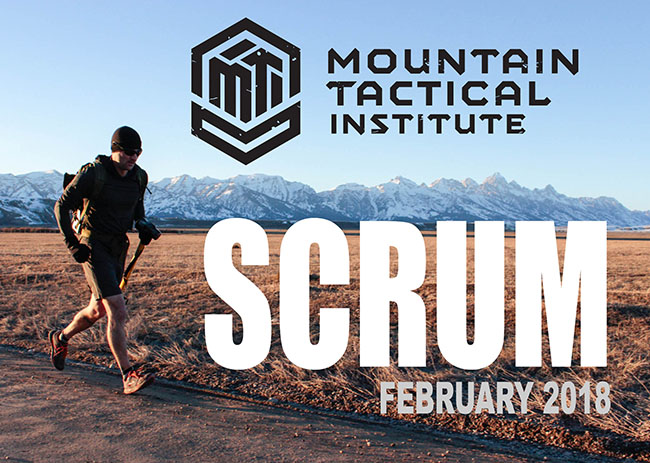
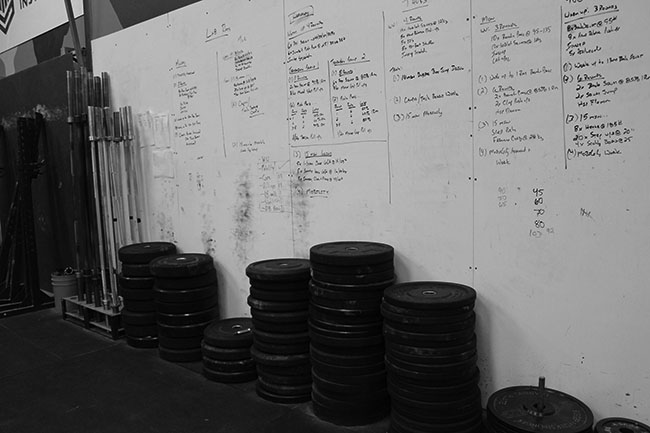
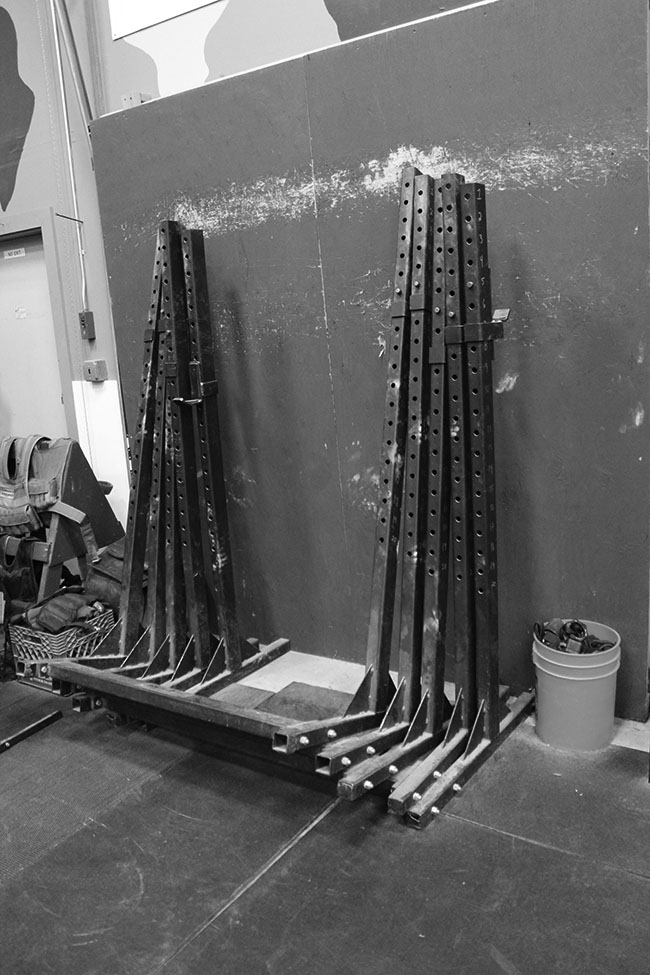

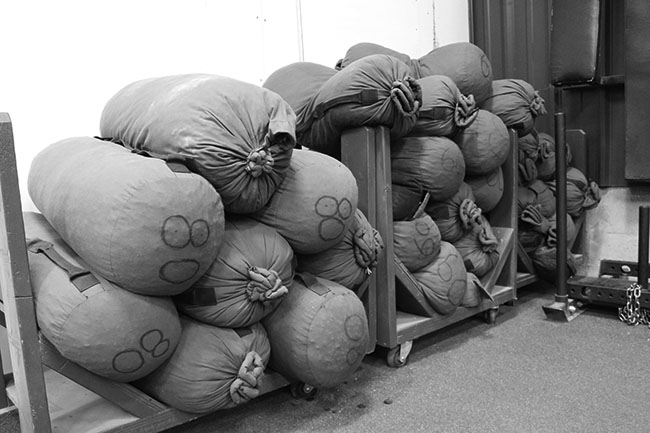

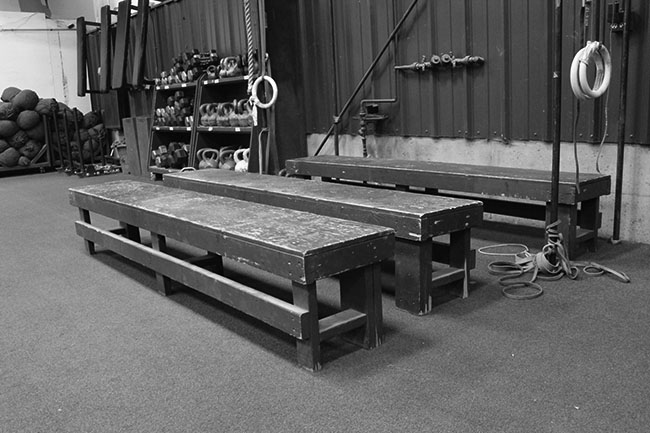
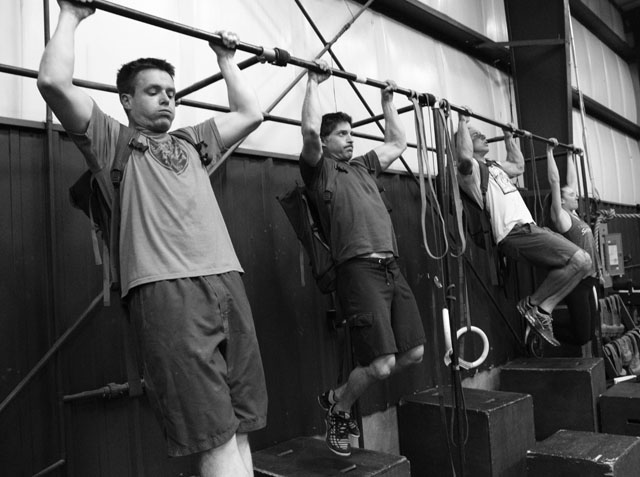 As well, we’ll connect big rubber bands to the frame for mobility and more midsection exercises, and use the frame a few select upper body stretches.
As well, we’ll connect big rubber bands to the frame for mobility and more midsection exercises, and use the frame a few select upper body stretches.


